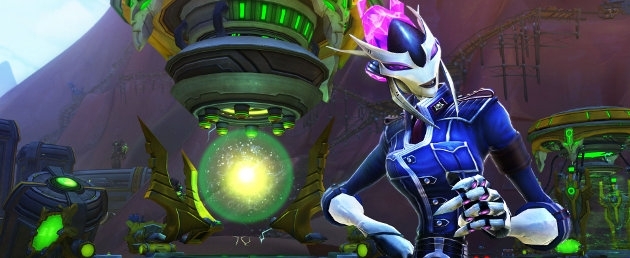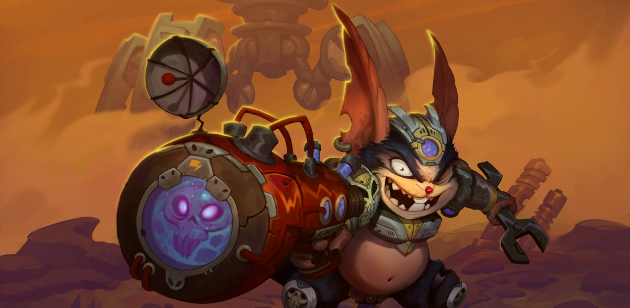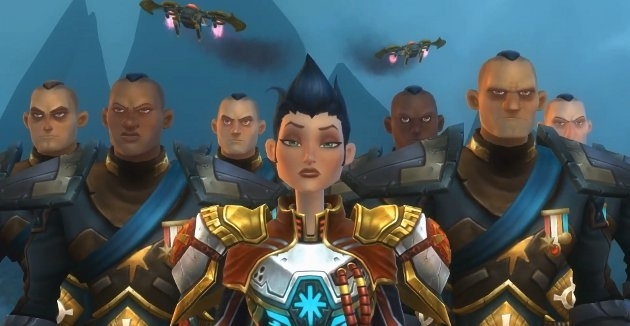WildStar: Business Model Revealed
ZAM talks with Jeremy Gaffney on the payment options for WildStar

I spoke to Gaffney about the tradeskill system and how the team might be looking at making players unique as crafters. Gaffney pointed at the talent trees that will make crafters feel different than the person standing next to them. I posited that a good tradeskill system in WildStar, when combined with the C.R.E.D.D. system, could be even more important as it would be feasible that a good enough crafter could essentially pay for their game time through tradeskills. Gaffney agreed that was certainly a possibility.
The press release we were provided about the business model stated that microtransactions are being considered, but only if they can be offered in a way that fits into the team’s vision of WildStar. I know I was surprised that microtransactions weren’t a central part of the WildStar business model—at least not at this stage—and I asked Gaffney what parameters microtransactions would have to meet to be incorporated. His reply, though tongue-in-cheek, stated the dangers and benefits of going that route:
“We’re interested in microtransactions because we’re money grubbing bastards. Players aren’t as interested in microtransactions because they hate money-grubbing bastards. And so, that’s the kind of parameters you want to do is you want to feel like if people want to spend money in your game you want to let them because a lot of people do. But if players feel like you are taking advantage of them, they say ‘Screw you,’ and they leave. Because we’re also gamers, in my mind, if we ever do cash shop, if we ever do MTX in a deep way, it has to give players a benefit that they otherwise wouldn’t get. We love the C.R.E.D.D. model because it’s win-win for players.

Gaffney then explained that when working on Lineage 1, the game was making—these figures may not be accurate—$200 million a year, which was healthy. Then the team checked the Korean version of eBay and discovered players were spending close to one billion dollars a year on in-game items. The behavior of players showed that some people are willing to spend a lot more money in-game.
Gaffney said that the C.R.E.D.D. system allows people to spend more money if they want, but it is going toward someone’s game time, that introducing that C.R.E.D.D. into the system is players helping each other. The money generated is then kept within the game rather than going toward those who would support gold farmers, hackers or outfits that farm items to sell on sites such as eBay.
The WildStar business model is very reminiscent of that used by EVE Online. It is a dual option system where players can either pay a sub or play enough to earn their way in-game—though the relative availability of that option will depend on fluctuations in the CX.
From a player perspective though, I don’t think EVE is considered a hybrid model by most gamers and the messaging on WildStar’s options will be important in the months ahead, particularly as the PR push begins to widen out into the general gaming public.

It’s hard to disagree with Jeremy’s opinion on the difference that business models make for long-term retention, that players will pay to play good games and it’s through retention of players that MMOs must focus their energies to be viable.
“Our argument is: you can see players are buying into games no problem, they’re interested in big ‘ole MMO games, which is great, but we’ve also seen games struggle with holding players in the game.
One of the answers that [studios] often try is ‘Well, let’s make the game free-to-play.’ I think, in general, for most games it doesn’t actually help retention. People still churn out at about the same rates.
Game quality is the king for all that.
Do you have repeatable elder games that are fun and compelling? Are you adding patches and cool new updates fast enough so that the players are interested in them? Those are more the secrets to life, in terms of long term game play, than business models. In any model, money flows from people playing a long time.
It’s actually one of the great things about the online game space; you can’t just do a flash marketing campaign, do a demo and stick a box on the shelf. Then everyone, [say] eight million people play it and then, a month later, no one is playing it any more and no one cares. That model doesn’t work in the online space. You are going to lose a massive amount of money with that model.
You have to be ethical as a developer, as a publisher, you have to do what you’re supposed to do: make a great game, give it legs, make it compelling.”
The business model as set out for WildStar has all of the hallmarks of a game that is being designed for the long-term, to bring players in and keep them playing.
This is a move away from the current “F2P hotness” that much of the industry has been moving in lately and is certainly a bold statement of intent from Carbine and NCsoft. Its success will, ultimately, ride on the quality of the game and its ability to leave players thirsty for more.
In essence, WildStar is a game that is fully embracing its “MMO-ness,” something that I’m sure many hardcore fans will applaud.
Scott "Jarimor" Hawkes, Editor in Chief
Follow me on Twitter @Jarimor




